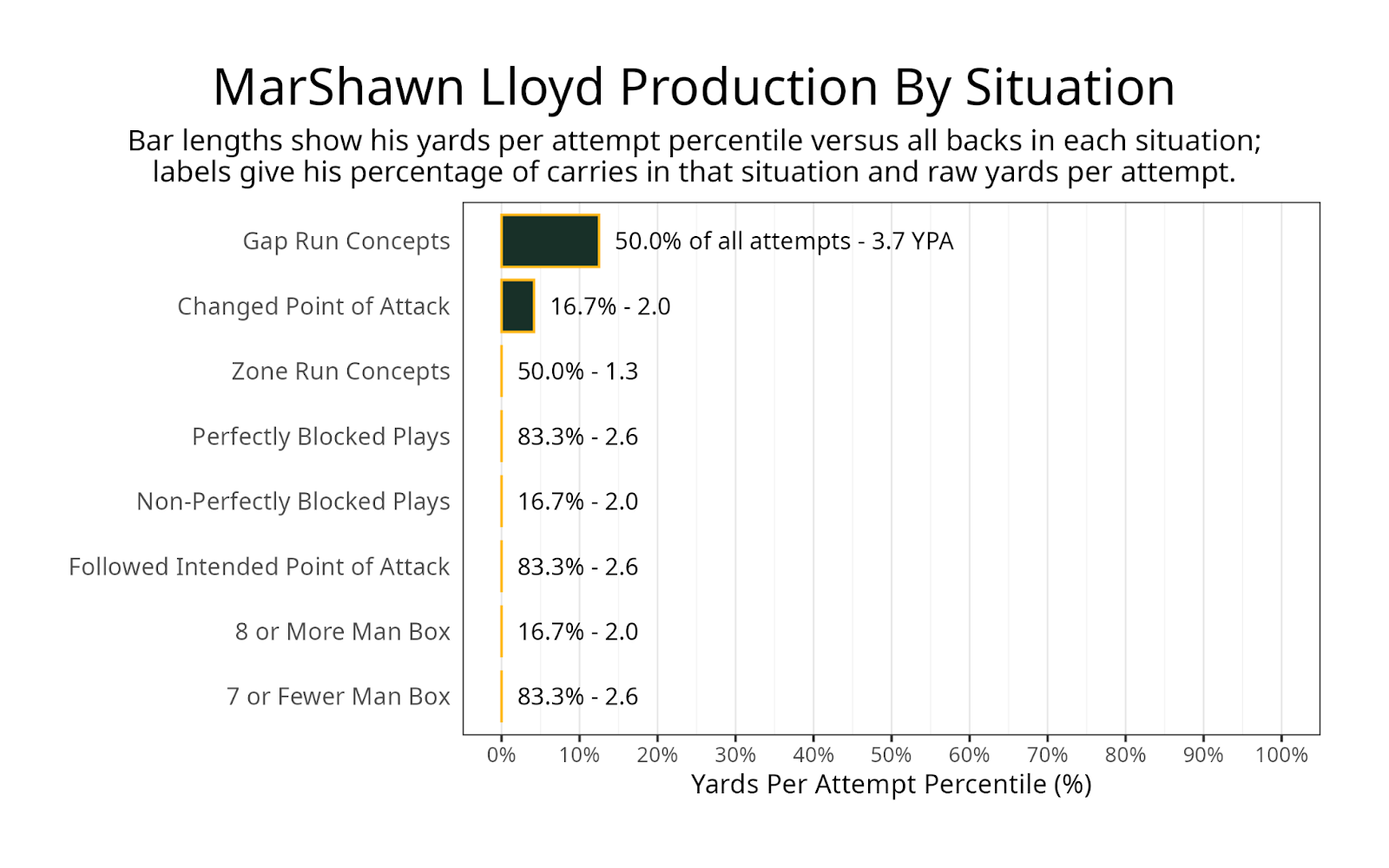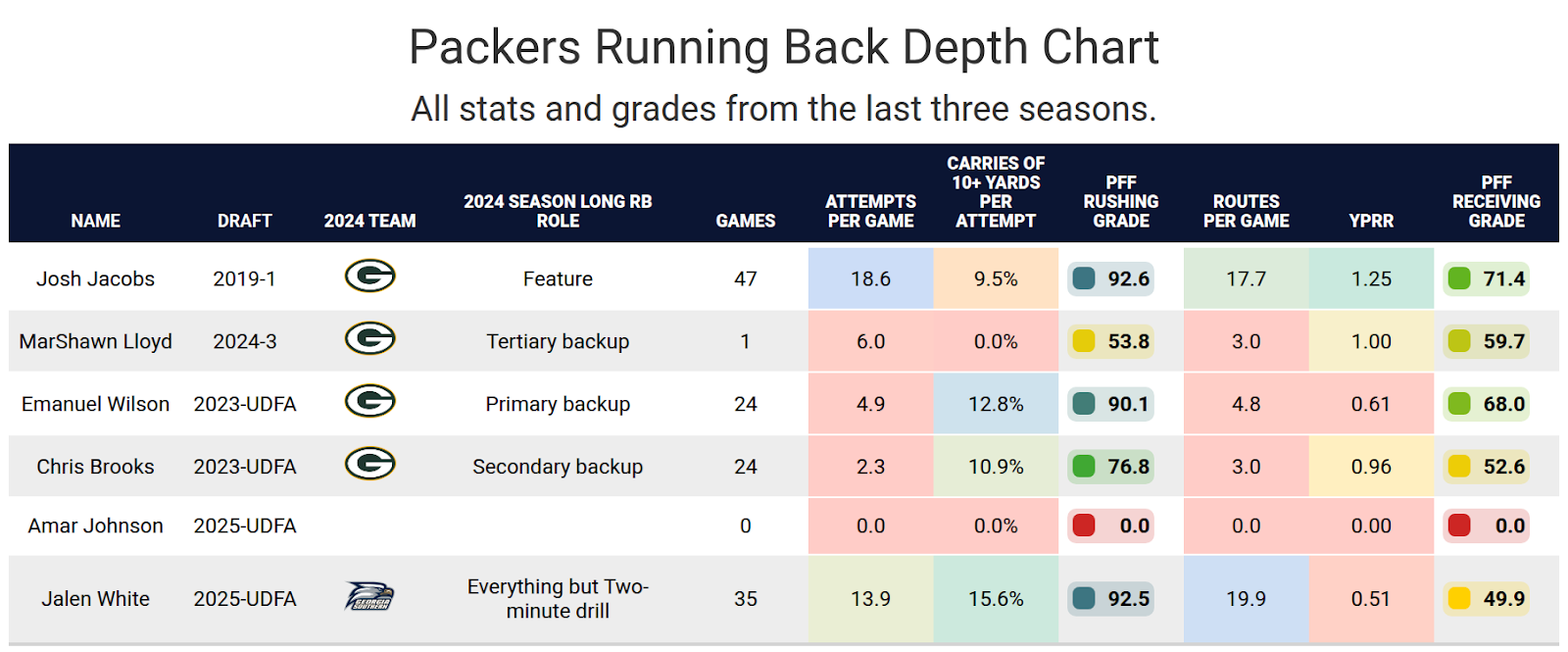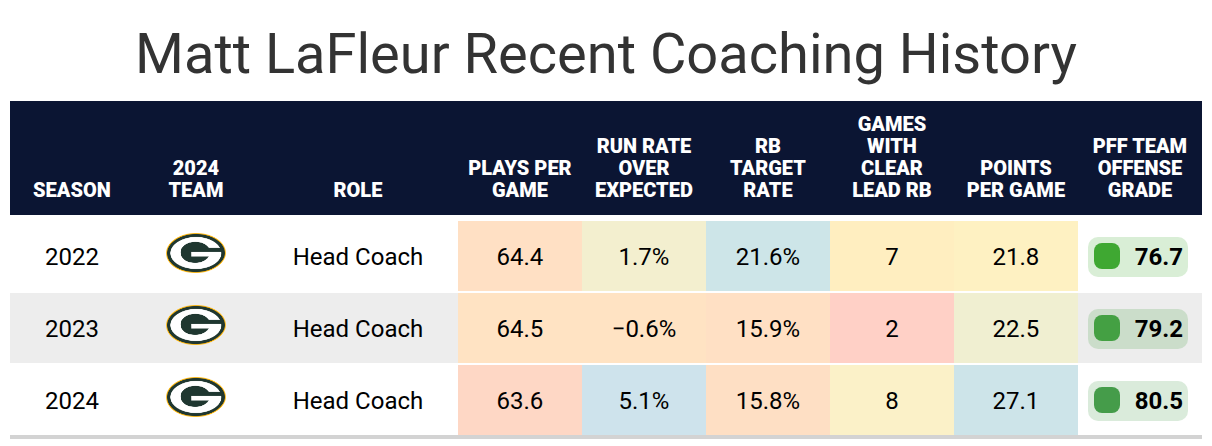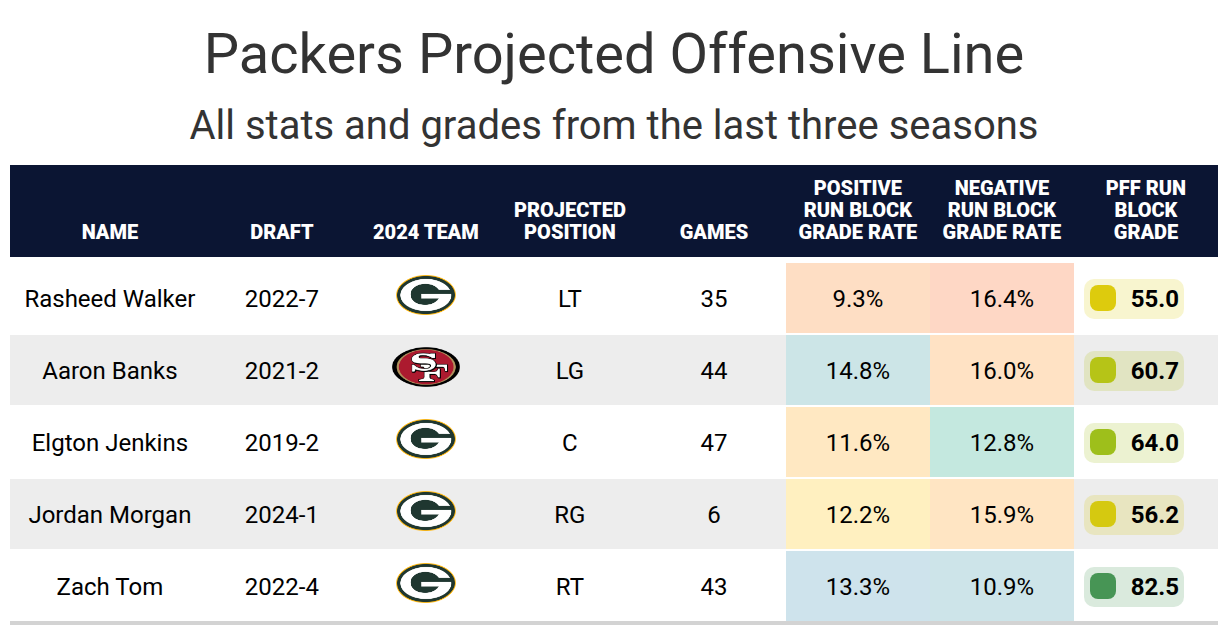
- Rookie season’s lost opportunities: MarShawn Lloyd‘s 2024 season was significantly impacted by injuries, restricting him to just 10 offensive snaps for the Green Bay Packers.
- Training camp readiness for 2025: The upcoming season holds promise as MarShawn Lloyd is reported to be fully healthy and prepared for training camp.
- Subscribe to PFF+: Get access to player grades, PFF Premium Stats, fantasy football rankings, all of the PFF fantasy draft research tools and more!
Estimated Reading Time: 5 minutes

PFF’s Fantasy Football Player Profile series delivers the most in-depth fantasy football analysis available for the 2025 season.
Using PFF’s exclusive data, we evaluate player performance, competition for touches and how teammates and coaching staffs
Last updated: 7:15 a.m. Tuesday, June 17
Player performance
MarShawn Lloyd was a third-round pick by the Green Bay Packers in 2024 after two seasons at South Carolina and one at USC. He joined a Packers room that for years had Aaron Jones and A.J. Dillon but moved on from Jones to add Josh Jacobs. Heading into the season, many thought Lloyd would play significant snaps as the Packers’ backup and have a chance of starting if he could outshine Jacobs.
In the Packers’ first preseason game, Lloyd played 14 snaps from the third to the sixth drive after Jacobs took the first drive and Dillon played in the second. However, Lloyd suffered a hamstring injury and was out for the remainder of the preseason and the first week of the regular season. Lloyd returned in Week 2, when he was eased into action with 10 offensive snaps, splitting backup duties with Emanuel Wilson. However, Lloyd suffered an ankle injury that put him on injured reserve.
The Packers opened up Lloyd’s practice window after Week 10 and activated him off injured reserve in Week 11. However, two days later, Lloyd landed on the non-football illness list due to appendicitis that required emergency surgery. This left Lloyd out for the rest of his rookie season.
Lloyd is reportedly healthy and ready to go for training camp. All of his 2024 stats should be taken with a grain of salt, considering the sample size was 14 snaps.



Projected role
The Packers not only lost Lloyd for most of last season but also lost A.J. Dillon for the entire season. He signed with the Philadelphia Eagles this offseason. The Packers used a pair of 2023 undrafted running backs, Emanuel Wilson and Chris Brooks, to split the backup role last season. Lloyd will need to compete with both players for the backup snaps, which he should be able to win.
Lloyd’s prospects aren’t as strong as last season, not only because Lloyd missed time but also because Jacobs played so well. He was coming off the worst season of his career in 2023, but last season, he received a 91.6 offensive grade (90.6 in the run game and 86.2 as a receiver). While there was some thought Lloyd could win the starting job at some point last season, it seems a lot less likely Lloyd can beat out Jacobs now. This means that even if Lloyd wins the primary backup job, he will likely only have fantasy value if Jacobs suffers an injury.
Jacobs has played all 17 games in two of the last three seasons. While he’s dealt with his fair share of injuries in his career, none of them have caused him to miss more than four games, and there haven’t been any consistent problems. Like all running backs, there is a risk Jacobs suffers a significant injury, but his chances aren’t any higher than any other running back.


Impact of teammates
The Packers are an OK team for a fantasy running back to succeed, but they aren’t the ideal situation. The Packers‘ low plays per game rate and have a constant use of a committee approach. While this should help Lloyd play throughout the season, it also means that if Jacobs suffers an injury, we will see at least one other back play notable snaps. The Packers offense was good enough for Jacobs to score a lot of points last season, but the passing game was also bad enough that LaFleur ran much more often than he had in the past. Green Bay invested in a wide receiver in the NFL draft, which could lead the Packers to go back to a more balanced offensive attack. This would lead to fewer touches by the running backs.
The Packers had a below-average run-blocking offensive line last season. The team was led by Zach Tom, who jumped from an 81.2 run-blocking grade in 2023 to 87.8 in 2024. There is a chance the line will improve this season. Long-time offensive linemen Elgton Jenkins is moving to center, and he graded better as a run blocker earlier in his career. The Packers signed guard Aaron Banks, who replaces Josh Myers in the starting lineup, and he should be a notable upgrade.
The big question mark is with Jordan Morgan, the former 25th overall pick of the 2024 draft. He played a few games in a partial guard role last season and could compete for the right guard or left tackle spot. While the line should see improvements with Banks on the roster, they could improve significantly if Morgan can live up to his draft capital.


Bottom line
Lloyd is somewhere in the middle of the handcuff running back options. We don’t know how good of a player Lloyd will be in the NFL yet, but Josh Jacobs has generally stayed healthy, and the Packers’ environment is only around average for running backs. He’s a late-round dart throw for a fantasy manager patient enough to wait for a Jacobs injury.

Footnotes
- Statistics in tables and charts were chosen based on their ability to predict future fantasy performance on a per-game or per-opportunity basis or to describe the player relative to others at the same position.
- “Opportunities” are defined as passing dropbacks, rushing attempts and routes run as a receiver.
- Numbers are provided either by season or based on the past three years. For rookies, only college statistics are included. For non-rookies, only NFL statistics are considered, regardless of whether they played in college within the previous three years.
- As college competition is easier than NFL competition, most rookies are likely to see a decline from their historical numbers.
- Only FBS data is considered for college players and comparisons.
- Kneel-downs are removed from rushing data to provide cleaner quarterback rushing rate statistics.
- The table colors in this article range from blue (indicating good/high) to red (indicating bad/low).
- All percentiles and color codings compare the given player to others with a high sample of opportunities. Generally, the cutoff is one-third of the possible opportunities in the sample. If a player does not meet the threshold, they are still included in the comparison, though their results may appear better or worse than expected due to the smaller, less predictive sample size.
- Information on utilization classifications and their importance can be found here for running backs, wide receivers and tight ends.
This news was originally published on this post .





Be the first to leave a comment